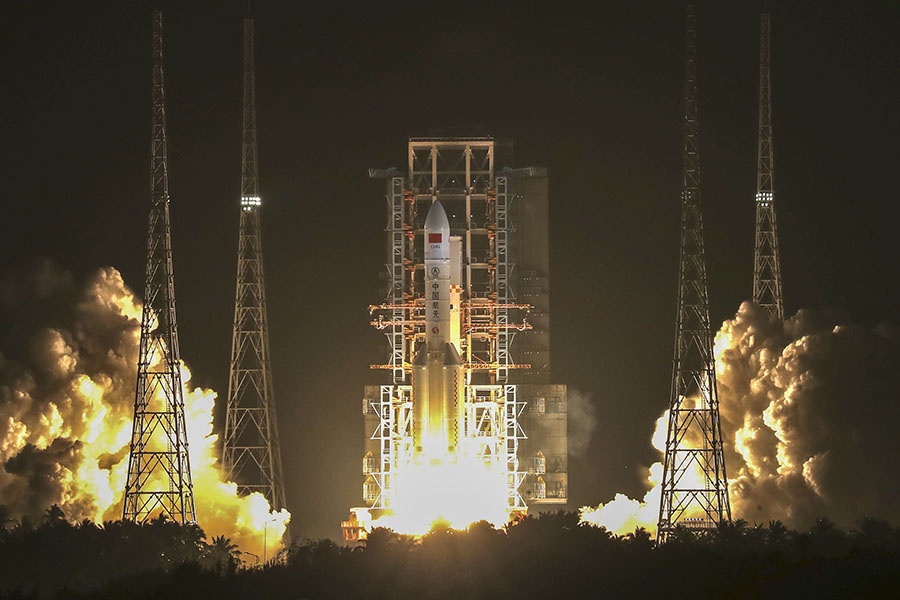Roaring rocket lifts satellite into space


Making it reliable
The first flight of the colossal rocket type was carried out in November 2016 at the Wenchang center. The second mission was in July 2017 at the same site, but it failed as a result of structural abnormalities inside the first core stage's liquid oxygen/liquid hydrogen engines.
According to project leaders, in the 908 days since that failure, the project team, together with a large number of scientists and specialists from domestic institutes and enterprises, worked all-out to find solutions. They held more than 600 seminars and carried out at least 1,000 experiments and tests to make sure the third Long March 5 would be reliable.
Wang Jue, the Long March 5 project manager, said: "Over the past two and a half years, our team managed to overcome technical problems in the engines and removed all other possible hazards."
Li Dong, the rocket's chief designer, said the troubleshooting efforts of designers and engineers also made breakthroughs in improving the rocket's technology and reliability.
"Compared with the Long March 5-Y2 that was used in the failed second mission, the new one had about 200 technical improvements including in engines' design," Li said.
























